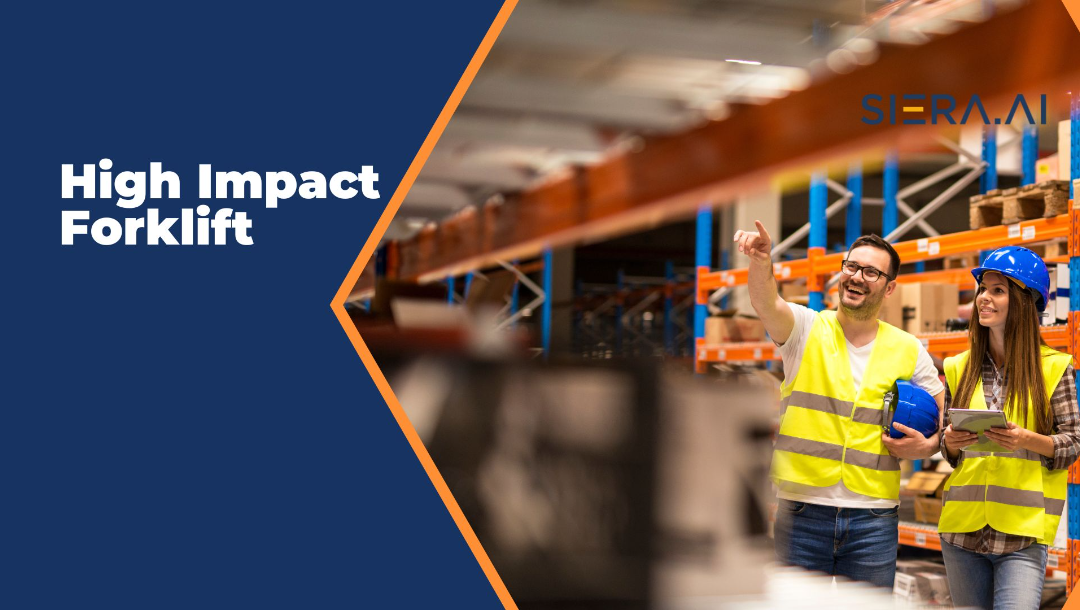How Can High Impact Forklift be Avoided?
High impact forklift accidents occur when proper safety measures by the forklift driver and/or pedestrian(s) choose not to follow the guidelines set by OSHA. High impact forklift safety measures are to be followed in order to avoid severe injury or death of pedestrians, forklift operator or both. No one ever thinks it can happen to them, but the risk is always there. Let’s take a look.
High Impact Forklift in Open Areas
Large open areas sometimes can be an invitation to drive fast. After all, forklift drivers have quotas to meet each day. If they can get to the end point faster, they can get more done…right? This is an invitation for a forklift to forklift accident or even a forklift to pedestrian accident.
Let’s say a pedestrian decided not to stay in the designated walking area. The individual would get to their destination so much faster if they could quickly cross in the open area. They were ‘safe’, or so they thought, by looking around for any forklifts. However, once the person got halfway through the open area, a couple of forklifts came from two different directions causing the individual to quickly back up to avoid the first forklift. However, when the pedestrian walked in reverse, tripped over the forks and well, the rest is history.
High Impact Forklift at the End of an Aisle
This is a common problem, and forklift drivers are frequently told to slow down and stop at the end of an aisle as pedestrians and forklift are often crossing paths. However, that’s not always the case.
The forklift driver just got done putting away a load. The driver is behind schedule and wants to ensure the job gets done. He reduces his speed, a bit, but the speed is still too high for an abrupt stop. We all know forklifts are not made for fast stops. As the forklift driver was turning out of the aisle, the oncoming forklift and the turning forklift collided. This was another high impact forklift incident that caused damage and worse, fatality.
How Can High Impact Forklift be Avoided?
High impact forklift can be avoided with current technologies offered in the marketplace, such as the S3 Pedestrian Detection System. The S3 is designed to give the forklift driver the support the operator needs to avoid an accident. No driver wants to hit a pedestrian or even any of the customer products they move each day.
The S3 Pedestrian Detection System first ensures the safety of the forklift by ensuring the driver conducts a digitally captured forklift safety inspection. This allows the operator to know its safe for operation and management to stay ahead of any issues the forklift may be experiencing.
Next, distance settings are set by the individual company as when they want the visual and audio alarms to notify the operator that a person is nearby or an object is within close proximity. These are separate warnings with symbols on the S3 so the operator has as much information as possible.
Finally, partial human detection is also a critical part of the S3 system. The S3 forklift safety system can detect a foot, head, hand…whatever part of the human body is showing from behind a stack of boxes or whatever object. The alarm will sound and give the symbol of a human so the operator knows a person’s life is at risk.
What Can an Operator do to Stay Safe?
We all know the old way (or maybe the current way for some) is paper. Grab that clipboard or booklet and start answering the same question, listed in the same order. Maintenance needs the forklift driver to take the forklift inspection seriously. But the truth is that not every forklift driver does. Not every driver includes the meter reading for the forklift. Let’s be honest, not every forklift driver is performing a proper inspection on the forklift truck 100% of the time. It’s only then that a maintenance manager may notice a problem with the forklift.
However, what the facility, fleet and/or maintenance manager must do is review the forklift sheets or booklet each week and try to figure out from paper if there’s a growing issue with the forklift. It’s not easy to figure out with paper-based forklift inspections. Yes, the information may be there, but how are you tracking? Are you making a spreadsheet? Creating PDFs of each forklift sheet? Or making special notes in the booklet? It does become a bit of an inconsistent mess.
Summary
Forklift to forklift accidents occur often enough that it’s time to take control with a proactive forklift safety solution that can help decrease forklift accidents in the facility. Contact us today at sales@siera.ai to begin using your new S3 Pedestrian Detection System with a telemetry Dashboard.
Book a Risk-Free Trial Or Get a Custom Quote

